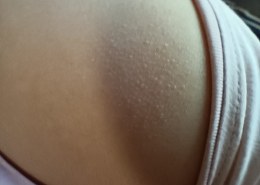My father had stroke 4 months ago and we bring him for rehab 2 times a week. Got some improvement after that, he can walk with a cane and move his hand a bit. But now like stuck already, not ...
Quitting smoking isn’t easy, but it helps to understand where you are right now. I usually explain it using the 6 Stages of Change Model: Precontemplation – Not thinking about quitting yet. Contemplation – Starting to think about quitting. Preparation – Actively planning to quit. Action – Actively wRead more
Quitting smoking isn’t easy, but it helps to understand where you are right now. I usually explain it using the 6 Stages of Change Model:
- Precontemplation – Not thinking about quitting yet.
- Contemplation – Starting to think about quitting.
- Preparation – Actively planning to quit.
- Action – Actively working to quit
- Maintenance – Staying smoke-free.
- Relapse – A slip-up, but a chance to learn and try again.
From what you’ve shared, it sounds like you’re probably at stage 2 (contemplation) or maybe even stage 3 (preparation), which is fantastic. Thinking about quitting or getting ready to take action is such an important step, and you should be proud of that.
Let me explain how nicotine replacement therapy (NRT) works in a simple way. When you smoke, you’re not just getting nicotine – you’re also inhaling other harmful chemicals, like tar and carbon monoxide, which do most of the damage to your health. With NRT, you still get a small, controlled amount of nicotine, but without all those harmful toxins. It’s a safer way to manage withdrawal symptoms and cravings while you work on breaking the habit.
What’s great about NRT is that it’s very flexible, and we can control the dose. For example, if you use a patch, you’ll start with a higher dose to manage the cravings and then gradually reduce it over time. The same goes for gum, lozenges, or inhalers – you use them when you need them and slowly cut back as your cravings get better. This gradual approach makes quitting much more manageable, especially compared to going cold turkey.
There are also a few types of NRT:
- Patches give you a steady dose of nicotine throughout the day.
- Gum or lozenges are great for sudden cravings when they hit.
- Inhalers are very popular because they replace not just the nicotine but also the hand-to-mouth habit that many smokers struggle to let go of.
- Sprays (mouth or nasal) provide quick relief for intense cravings.
From my experience with other patients, a lot of them find the inhaler most helpful because it mimics the act of smoking, which can be one of the hardest parts to give up.
I know some patients also worry if an inhaler is like vaping. It’s actually very different. With NRT inhalers, you’re only getting a controlled dose of nicotine – there’s no harmful chemicals, no burning, and no smoke. It’s purely a tool to help you quit, not something designed to replace one addiction with another.
In Malaysia, you can get NRT products like patches, gum, and inhalers at pharmacies such as Guardian, Watsons, or Caring Pharmacy. Just ask the pharmacist, and they’ll guide you on how to use them properly. You can also visit a smoking cessation clinic or any general clinics if you’d like more support.
The fact that you’re considering quitting is already a huge step. With the right tools and support, you can definitely do this.
Dr Say.
References:
- Centers for Disease Control and Prevention (CDC) – Benefits of Nicotine Replacement Therapy
- World Health Organization (WHO) – Tobacco Facts and Smoking Cessation
- Ministry of Health Malaysia – Resources for Smoking Cessation Clinics and Quitline (KKM MyHealth)


Hi there. Good to know your father is recovering from his stroke. The first 6 months following stroke is the ‘golden time’ for neurological recovery. However we do still see improvements beyond 6 months. Twice per week rehabilitation may not be adequate for your father. I would advise a more comprehRead more
Hi there. Good to know your father is recovering from his stroke. The first 6 months following stroke is the ‘golden time’ for neurological recovery. However we do still see improvements beyond 6 months. Twice per week rehabilitation may not be adequate for your father. I would advise a more comprehensive stroke rehabilitation program comprising of physiotherapy for physical strengthening, occupational therapy for hand function training and also retraining for activities of daily living and rehabilitation specialist assessment to assess if he is developing complications like spasticity and spasm.
Dr. Nor Azira Ismail
See lessConsultant Rehabilitation Medicine Physician
IHT Rehab (https://www.ihtrehab.com/)
LinkedIn: https://www.linkedin.com/in/nor-azira-ismail-a4a5493a